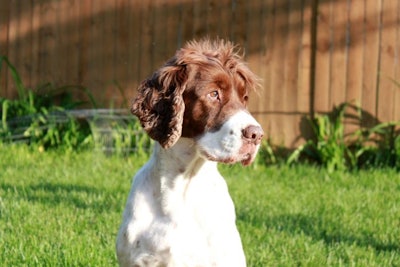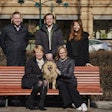
During the ongoing pandemic, global pet food sales remained strong and even increased, despite the unprecedented economic downturn and unemployment caused by COVID-19. However, that growth wasn’t evenly distributed globally or economically, which increased opportunities for premiumization of pet food.
“What we see here is a dramatic shift,” Jared Koerten, senior head of pet care research at Euromonitor International, said in a webinar (Pet Care Outlook: Which Trends Will Outlast the Pandemic?). “We see developed markets like North America, Western Europe, Australasia, that had traditionally seen very sluggish, population growth, suddenly outperforming these historic averages by a factor of two or three. Meanwhile, we're seeing a huge deceleration in Asia, led by China…
“That shift from emerging markets to developed markets is really driving up that average global spend per pet significantly…” he said.
Increased spending on pet food often comes from buying higher priced, premium and superpremium formulations.
“We see it in our in our forecast, if you look at the past decade, the average price for dog and cat food has grown by about 3.3% over that decade, he said. “Moving forward, we're expecting that to accelerate to a compound annual growth rate of more than 4%, as these premiumization trends continue to accelerate with this new base of higher income households.”
Global pet population growth trends in 2020
As pet shelters emptied in some places, dogs and cats ended up on the street in others. Consequently, although the global pet population remained stable in 2020, certain regions saw marked increases in pet ownership growth rates while others stagnated or declined. Those differences among regions resulted in more pets in the right places to drive dog and cat food sales growth, Koerten said.
The global dog and cat population increased at a compound annual growth rate of approximately 3.25% during the past decade.
"If we look at 2020, we can see essentially no change, no discernible uptick, no discernible downtick at all when it came to the global pet population growth…,” he said. “Given this interesting finding, how do we explain this massive [sales] spike in the industries and incredible growth in 2020?”
Changing pet owner demographics may explain why pet food and treat sales soared as the global economy tanked.
In the United States, Canada and Europe, pet populations increased. Of these, the U.S. grew most at more than 4%. The U.S. also had some of the highest spending per pet at US$212. The other top growth regions also had pet owners who spend more cash for kibble. To the contrary, regions where pet populations declined or stagnated tended to be places where pet owners spend less on their animals. In particular, the Asia-Pacific region dropped to a bit over 2% pet population growth in 2020 from more than 10% compound annual growth rate from 2014 to 2019. China led much of that increase and subsequent slowing.
Likewise, within countries, higher earning households tended to increase pet ownership, while lower income levels may have been forced to give up pets. U.S., Germany, China, Brazil and Australia all saw pet ownership rates increase most in higher income households. At the same time, ownership rates declined in the lowest income brackets.



















